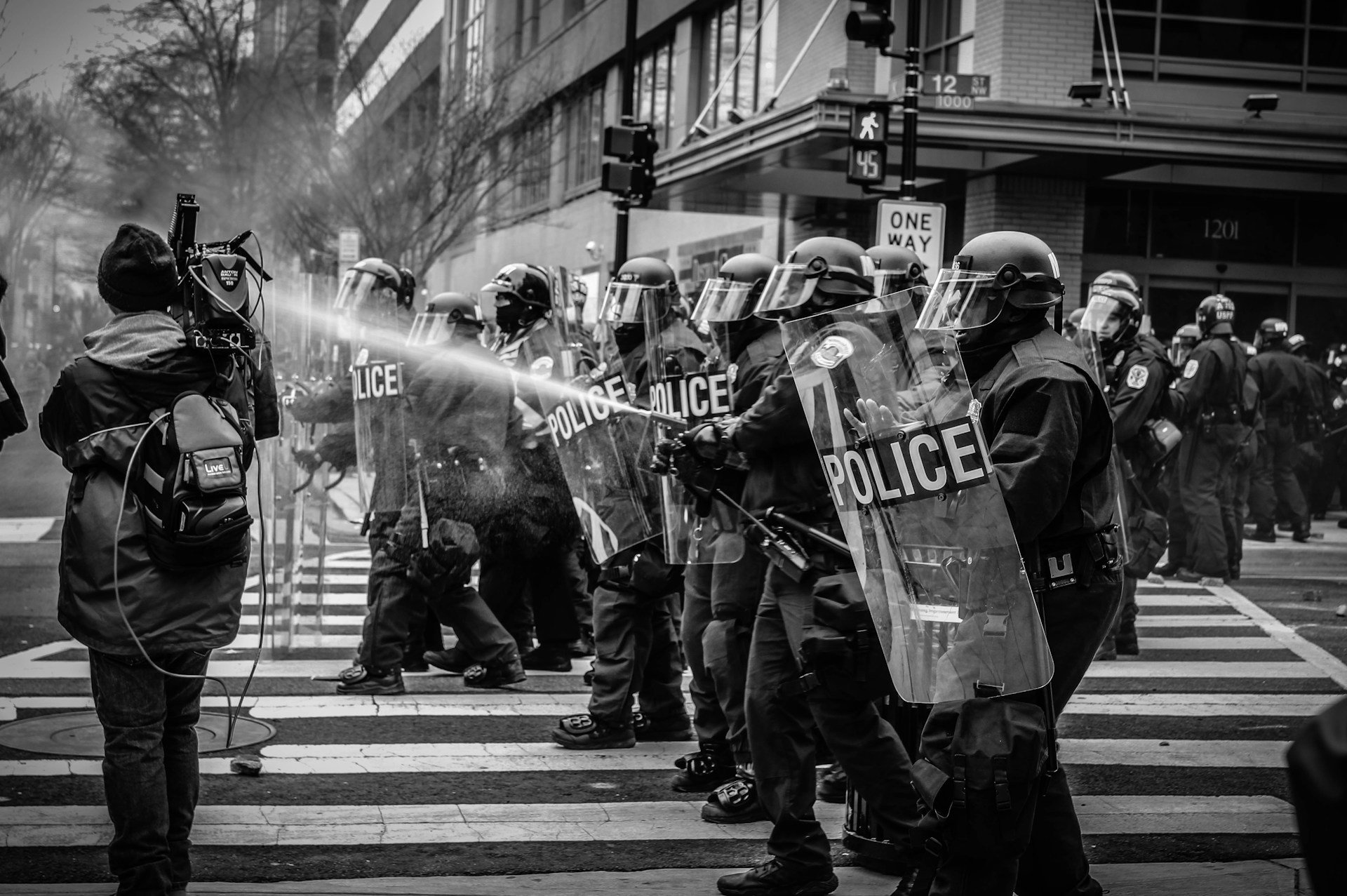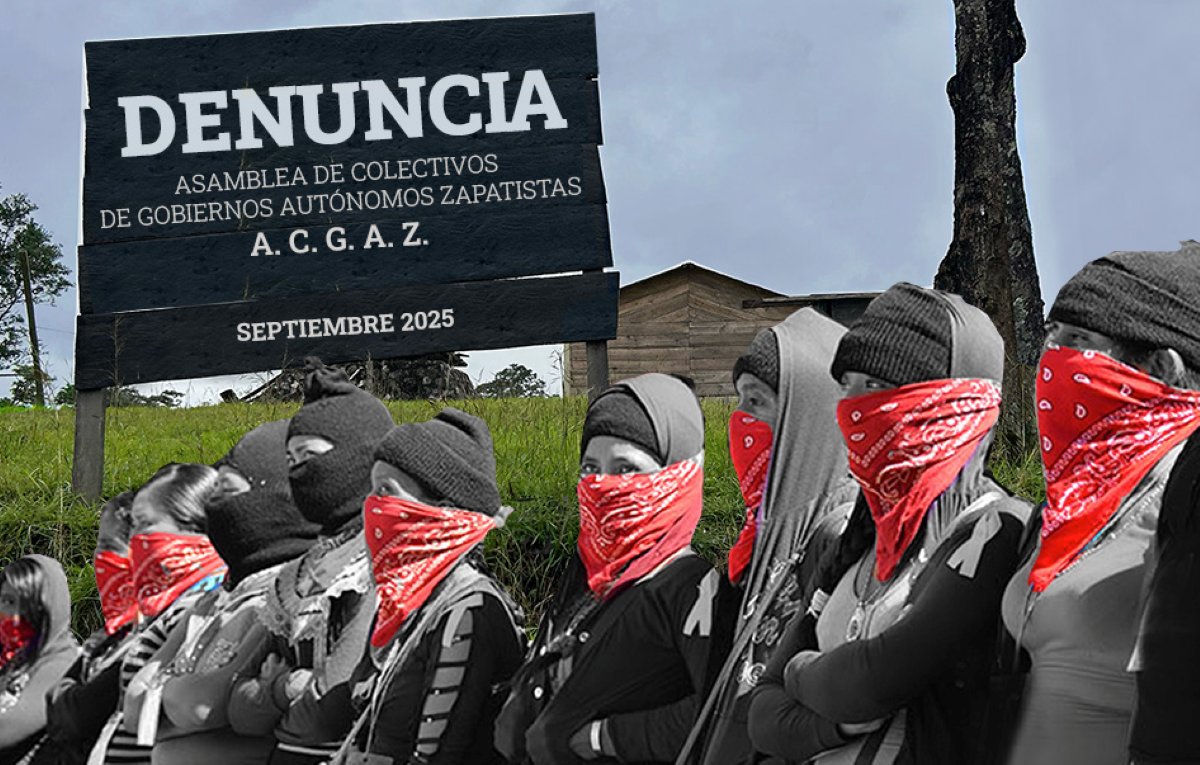Filed under: Anarchist Movement, Anti-Patriarchy, Featured, Immigration, Incarceration, Interviews, Northwest

On March 8th, a group of revolutionary anti capitalist women, queer,
and nonbinary radicals organized an autonomous action that drew hundreds of people together in San Francisco, CA and marched on the ICE facility in Downtown SF. Wanting to know more about the mobilization and the ideas behind it, we caught up with several participants.
Why did people mobilize on March 8th?
Two things: 1.) March 8th was actually International Working Woman’s Day. Women (but not only women) from more than 50 countries participated in an international day of action. The action in San Francisco was only one of many in solidarity around the world;
Like any other police force, they are a tool of the state, the destruction of which is necessary (though not sufficient) to the destruction of patriarchy.
2.) The huge “women’s marches” that happened around the country the day after Trump was inaugurated disappointed and inspired many feminists. On the one hand, the prevalence of those pink “pussyhats” and genitalia-obsessed signs were pretty embarrassing. You would think Leslie Feinberg, Sylvia Rivera and Miss Major never happened. You wouldn’t know that more and more people believe gender exists on a spectrum and shouldn’t be limited to the categories of man and woman. And, there were stories of Black women holding BLACK LIVES MATTER signs or chanting BLACK LIVES MATTER being told that the “women’s marches” weren’t about that. You might forget women like Marilyn Buck have existed and do exist.
On the other hand, on January 21, 2017, 2.6 million people marched. That’s a lot of people coming out in support of women. For the first time in a long time, it seemed like another wave of militant feminist struggle was possible. That inspired many feminists to organize actions that better reflected their concerns than the “women’s marches.” In San Francisco, that meant marching to ICE headquarters and letting ICE know they aren’t welcome in our sanctuary city.
Why was the action called a “Gender Strike?”
We wanted to problematize the category of woman. Woman as a category isn’t universal or natural, but historically produced. It is always an already racialized concept. What we wanted to focus on was reproductive labor and how that falls upon racialized and gendered lines. Most of the reproductive labor done in the U.S. today falls upon brown and Black women, many of them undocumented. Women of color are the ones taking care of everyone’s children, the elderly, and making sure an entire country is nourished. Moreover, we wanted to expand the notion of gender to include the ways that gender power is leveraged and exerted by the state (in the forms of local police, ICE, and military) as well as state-sanctioned actors upon racialized and working class people.
Why did people target ICE? What is the connection between International Working Women’s Day and ICE?
As already noted, we really wanted to highlight the way that gendered power works in ways beyond what mainstream white liberal feminism assumes. The gendered subject is not, by default, a white woman. The most vulnerable people in society are those with precarious legal statuses—due to documentation status or the legality of the work that they do. Undocumented trans women are some of the women most vulnerable to gender oppression. Black undocumented women are some of the most likely women to be deported. Our analysis of gender oppression needs to be intersectional.
In San Francisco, actions against ICE have the potential of heightening current tensions between local and federal government and local and federal law enforcement as they are forced to answer the question: how far will local law enforcement go to protect a federal law enforcement agency they aren’t supposed to be cooperating with?
The uniforms of ICE agents say POLICE because ICE agents are police who work for the federal government. Like any other police force, they are a tool of the state, the destruction of which is necessary (though not sufficient) to the destruction of patriarchy. Taking direct action to destroy patriarchy seemed a fitting way to spend International Women’s Day, but you could also see the struggle against ICE as part of ongoing anti-police and anti-racist struggles in the Bay Area and beyond, struggles that have become increasingly visible with the advent of the Black Lives Matter movement as well as with riots in Oakland, Ferguson, Baltimore and other US cities.
This is also an interesting moment in terms of the relationship between the state of California and the federal government. While Trump has threatened to defund them, sanctuary cities across California, like San Francisco, have insisted they will not cooperate with ICE. As a matter of fact, California lawmakers have begun advancing measures that would bar the state’s police and sheriffs from enforcing federal immigration law – effectively making California a “sanctuary state.” In San Francisco, actions against ICE have the potential of heightening current tensions between local and federal government and local and federal law enforcement as they are forced to answer the question: how far will local law enforcement go to protect a federal law enforcement agency they aren’t supposed to be cooperating with?
You stated in the call out that you “refuse to collaborate with elite power brokers, naked capital and imperial interests, opportunists, managers and tepid reformists of every pink stripe.” Can you explain?
We want a feminist revolution.
Many people applauded the Women’s Strike for being self-contained, very policed, and overall, peaceful. What are your thoughts on the Women’s March and how do these thoughts and critiques inform how you move forward?
The willingness of cops to wear pink “pussyhats” and high-five women participating in a “women’s march,” only makes the reality of the role they play in patriarchy more disturbing.
Observing the “women’s marches,” you would think police had nothing to do with the election of and authority granted Trump. Nevermind that the Fraternal Order of the Police – the nation’s largest police union – endorsed Trump for President after he received support from more than two-thirds of the union’s national board. Nevermind that the day before the “Women’s March” in DC, DC police trapped, detained and then without issuing dispersal orders, arrested 230 people resisting the election of Trump – many of which were women. But beyond Trump, cops beat their wives and girlfriends at nearly double the national average, and cops are accused of rape at twice the rate for the general public. Cops have also facilitated the jailing and imprisonment of 47% of African-American transgender and gender non-conforming people and 30% of American Indian transgender or gender non-conforming people. The willingness of cops to wear pink “pussyhats” and high-five women participating in a “women’s march,” only makes the reality of the role they play in patriarchy more disturbing.
The Trump era has brought a wave of patriarchal, racist, and fascist attacks on whole communities. How should people be thinking about how to respond?
Although it goes without saying that Trump should absolutely be opposed, as a group we don’t subscribe to liberal politics that exceptionalize his presidency or his policies. Muslims have been the subjects of surveillance by democratic presidents, for example. Under Obama, a record number of undocumented people were deported. This entire country was founded
genocide, slavery, and settler colonialism. Police killings of Black and Native people continue with impunity. The situation has been bad for centuries. So now, just as before Trump’s presidency, is a time to build up local resistance and alternatives to calling the police, a time to do militant healing work, and a time to strategize across borders.







